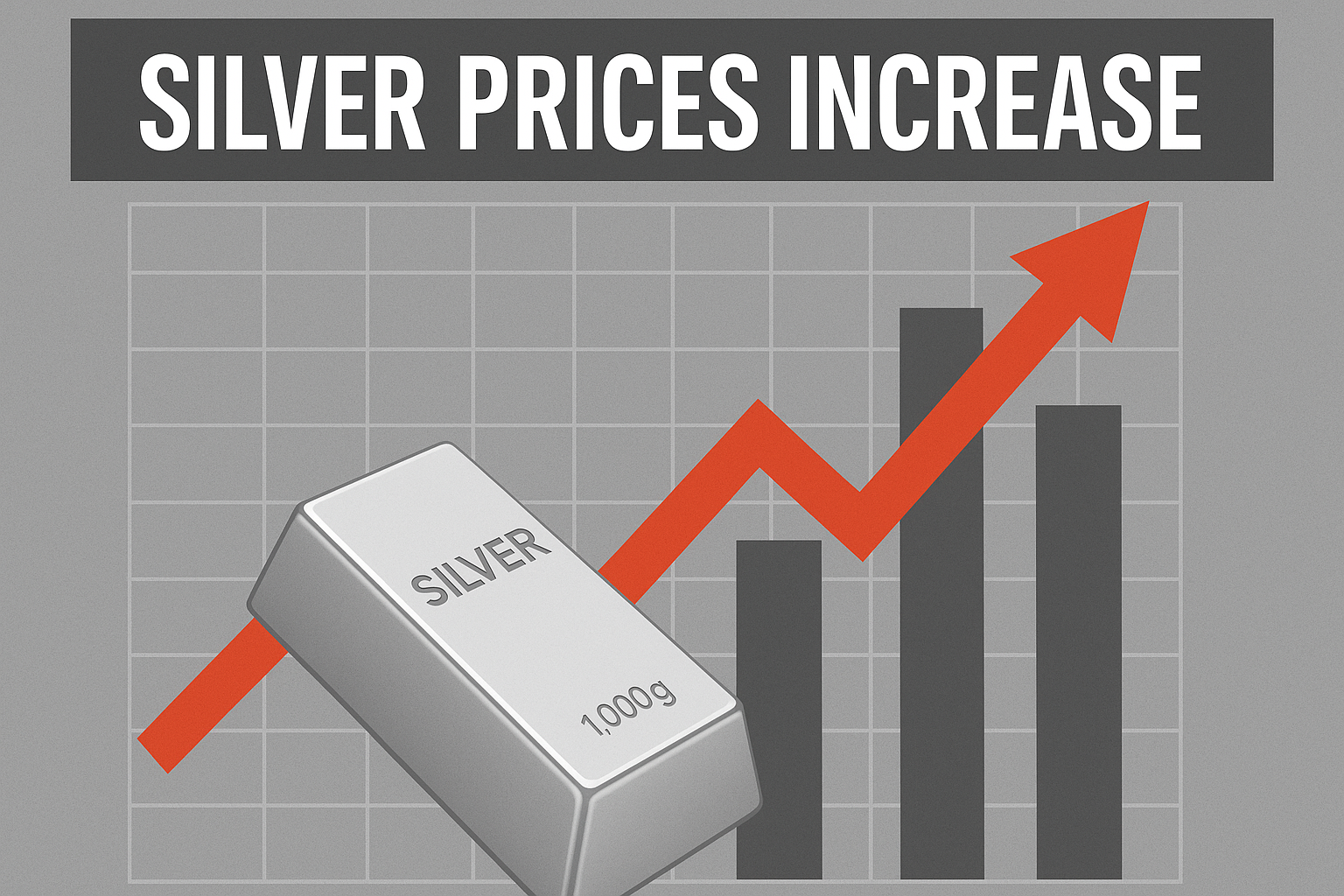

In India, silver prices on the MCX were ₹89,100 per kg on June 11, 2024, and the prices reached ₹1,03,000 per kg by early June 2025.
June 2024 Price: ₹89,100 per kg
June 2025 Price: ₹1,03,000 per kg
Absolute Change: ₹1,03,000 - ₹89,100 = ₹13,900 per kg
Percentage Change: (₹13,900 / ₹89,100) × 100 = 15.60%
Internationally, silver prices increased by $7.34 per ounce, a 25.18% rise.
In India, prices rose by ₹13,900 per kg, a 15.60% increase.
Supply Deficit: The silver market has been in a deficit for the fifth consecutive year, with a projected shortfall of 4.2 tonnes in 2025, despite a slight increase in supply to 29 tonnes. Demand, however, is expected to reach 34.3 tonnes, continuing a trend of outpacing production since 2021. This persistent gap, coupled with declining total silver supply over the past decade (from 30.3 tonnes in 2010 to 29.2 tonnes in 2024), is a major price driver.
| Category | Tonnes | Time Period / Notes |
|---|---|---|
| 2025 Projected Demand | 34.3 tonnes | Expected global demand for silver in 2025 |
| 2025 Projected Supply | 29.0 tonnes | Expected global supply with a slight increase |
| 2025 Supply Deficit | 4.2 tonnes | Projected gap between demand and supply in 2025 |
| 2010 Global Supply | 30.3 tonnes | Historical supply recorded in the year 2010 |
| 2024 Global Supply | 29.2 tonnes | Most recent historical data prior to 2025 projections |
2. Industrial Demand: Silver’s role in green technologies, particularly solar energy, is a significant factor. Photovoltaic solar panels, which use about 5.67 kg of silver each, are seeing record global installations, with the solar industry accounting for 16% of global silver demand and growing 14% annually over the past decade. Additionally, silver demand is rising in electric vehicles (EVs), 5G networks, AI-driven electronics, and medical applications due to its conductivity and antimicrobial properties. Industrial consumption, which makes up 55.8% of global silver use, surged 7% to 19.8 tonnes in 2024 and is expected to hit a new record in 2025.
3. Geopolitical and Economic Uncertainty: Ongoing global tensions, such as the Russia-Ukraine conflict, and US tariff policies under President Trump are driving safe-haven demand for silver. Russia and Mexico, which together produce 21% of global silver, face regulatory and conflict-related disruptions, impacting supply. Economic uncertainty, including fears of a US recession and global growth slowdown, has pushed investors toward precious metals. Silver’s affordability compared to gold (gold-silver ratio at 100:1 in April 2025) makes it an attractive hedge against inflation and currency depreciation.
4. Monetary Policy: Expected US Federal Reserve rate cuts in 2025 reduce the opportunity cost of holding non-yielding assets like silver, boosting its appeal. Lower real interest rates (nominal rates minus inflation) and a weakening US dollar (down from 110 to 103 on the dollar index) further support silver prices. Central banks, like Russia’s, are also increasing silver holdings, with plans to acquire $535 million worth over three years.
5. Market Sentiment and Investment: Silver prices have risen 23.53% year-over-year as mentioned above. Silver-backed ETFs have seen inflows, with holdings up by 62.369 kgs recently, reflecting growing investor interest.
However, there are risks. Trump’s tariffs could weaken industrial demand by increasing costs, and potential "thrifting" (substituting silver with cheaper alternatives in manufacturing) might ease demand pressure. Additionally, while silver recycling is up 5% in 2025, it’s not enough to offset the deficit. Despite these challenges, the structural deficit, industrial growth, and safe-haven appeal are likely to keep silver prices elevated in the near term.
Comments
Write Comment